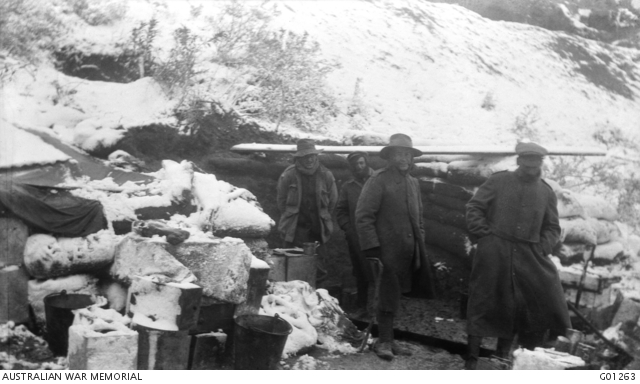From scorching heat to snow: the extreme weather of Gallipoli
It was hell on earth. Rough, impossibly steep terrain, meagre rations, never enough water, poor sanitation, and of course, a constant hail of Turkish bullets and shells.
Gallipoli was a battlefield like no other. But there's one factor which made life especially tough for the Anzacs: the weather.
Australians and New Zealanders endured all sorts of extreme conditions in World War I, not least those mired in the trenches of northern France in bitter winter conditions.
But Gallipoli had it all – extreme heat in summer, flooding rains, parching dry spells, then regular snowfalls in winter.
The campaign started when the ANZAC forces landed at Gallipoli on April 25 – hence the date of ANZAC Day. That's the northern hemisphere spring, and conditions were relatively mild.
But spring soon turned to summer and the ANZACS found their unforms too heavy in temps that were widely described as "over 100 degreees in the shade" (100°F is 37.8°C).
Digers modified their uniforms in various ways, and sometimes even went shirtless.
The heat made water just about the most valuable thing in the trenches, and troops were often unable to wash or shave for lack of it. Disease, and swarms of flies, were also major problems as the number of dead lying in No Man's Land – unable to be retrieved – increased over that the summer of 1915.
Then in November, early snows arrived.

Image: Diggers in a November blizzard. Source: Australian War Memorial.
"It is actually snowing this morning. The first I have ever seen. I woke up to find the whole country white," Private Ronald McInnis of the 26th Battalion wrote in a letter home, dated 28 November 1915.
In the sparse, uncomplaining prose typical of WWI diggers, he added: "It looks beautiful and covers over so many things which are not."
Many ANZACs suffered frostbite throughout the harsh Turkish winter. The Gallipoli campaign would eventually end before winter did. But its legacy lives on.
Lest we forget.
GALLIPOLI WEATHER STATS
And for those interested in the current weather conditions or long-term averages (in a 30-year period from 1981-2010) in the coastal city of Çanakkale, the closest large city to the battlefields of Gallipoli, the Turkish State Meteorological Service has a page here.
You'll be interested to note that:
- The average maximum temperature in the hottest month is 30.7°C (July and August equally), which is hotter than the average maximums in Sydney, Melbourne or Canberra in their hottest month (January)
- The average maximum temperature in the coldest month (January) is 9.7°C, which is colder than the average maximums in Sydney, Melbourne or Canberra in their coldest month (July).